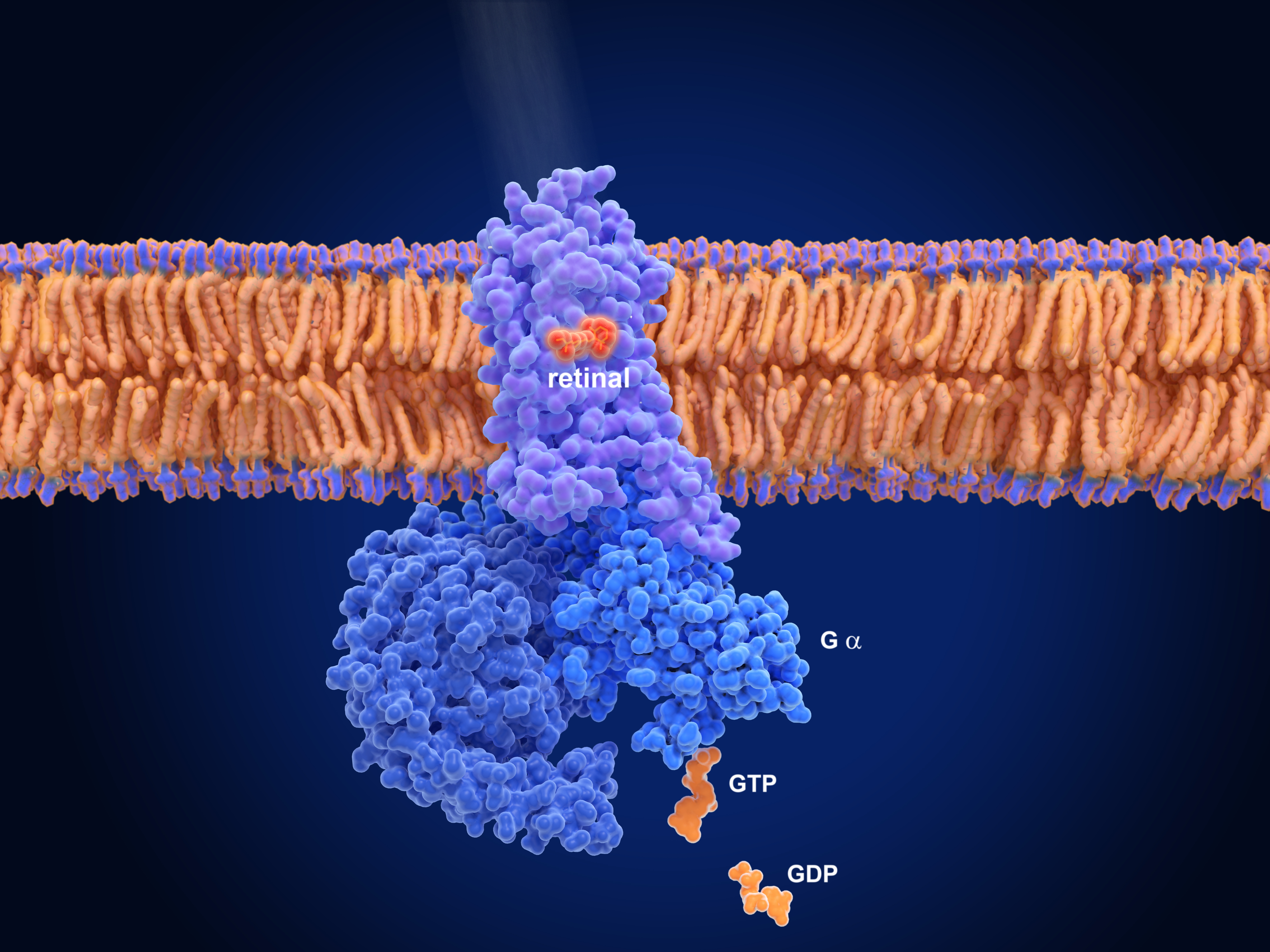HOW WE SEE PHOTONS AS EVIDENCE FOR INTELLIGENT DESIGN

The complexity of every physiologic system is evidence for intelligent design. A YouTube animation by Kerry Kim entitled “Phototransduction: How We See Photons” is the latest animation that attests to this statement. Here, I briefly summarize this extremely complex process however I strongly encourage the reader to watch the animation in its length. In doing so keep in mind the shape of each molecule is encoded in DNA. Each specifically three-dimensionally shaped molecule has a specific function, and each function is a critical step in a physiologic cascade. The cascade involves multiple interdependent molecules and functions. If one step is left out or modified, the system fails.
The dark-adapted rods in our retinas detect individual photons that activate a light-sensing molecule within them. This means we can detect events affecting individual molecules. The process by which light is converted into electrical signals in photoreceptors is called phototransduction.
Within our rods is a molecule called rhodopsin which consists of two smaller molecules: retinal and opsin. When light is absorbed, a double bond changes the configuration which then activates the rhodopsin. The activate rhodopsin then must be activated to affect the whole cell. This requires amplification of the process.
In addition to rhodopsin there are two other proteins in the membrane: transducing and phosphodiesterase. After a photon activates rhodopsin, rhodopsin will activate transducing. The activated transducing will in turn activate phosphodiesterase. All of these molecules are in constant motion colliding at incredible rates which causes amplification in just a few hundred milliseconds. Further amplification occurs by destroying cyclic GMP (cGMP). When cGMP encounters activated phosphodiesterase, each phosphodiesterase will destroy thousands of cGMP molecules resulting in a decrease in the concentration of cGMP.
What happens next occurs because of decreased cGMP—the conversion into electrical signals. Rods have a constant circulating electric current in the dark because positive ions in the form of sodium are being pumped out of the cell which causes the cell to become negatively charged. Proteins called ion channels allow charge to enter the cell. Open ion channels allow ions/sodium to re-enter the cell. This occurs because cGMP binds to the channels which keeps the channels open, and charge can enter the cell. The channels will close when cGMP is destroyed.
In this way the cell becomes negatively charged by approximately 1 millivolt. This electric signal is passed on to other nerve cells. All of this occurs in less than 1 second. Any 1 of the millions of rhodopsin molecules can activate this cascade. In brighter light, more activated rhodopsin will lead to more destruction of cGMP, and a greater electric signal from closing more channels.
This one straightforward physiologic system clearly illustrates the extreme complexity of anatomy, physiology, and DNA. But remember this is the easy part! The hard part begins when the brain transforms the electric signal sent by the rod into vision. Biological processes are physical processes to which we must apply our physical and mathematical intuition, and which cannot reasonably be attributed to the natural selection of random mutations.

Leave a Reply